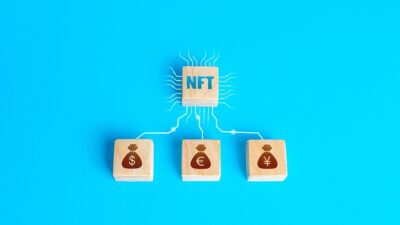The concept of the metaverse has rapidly gained traction in recent years, evolving from a niche sci-fi concept into a buzzword that encompasses a vast array of digital experiences. As tech giants and startups vie to create immersive virtual environments, one platform stands out in its integral role in shaping this next digital frontier: Ethereum.
Understanding the Metaverse
At its core, the metaverse refers to a collective virtual space where users can interact with each other and their environment in real-time. It’s a convergence of augmented reality (AR), virtual reality (VR), and traditional digital platforms—creating a fully immersive experience. In this vast digital playground, users can socialize, work, play games, trade assets, and engage in countless activities, often using virtual avatars to represent themselves.
Ethereum’s Blockchain Technology
Ethereum is a decentralized, open-source blockchain that facilitates the creation of smart contracts and decentralized applications (dApps). Smart contracts are self-executing contracts with the terms of the agreement directly written into code. This functionality allows developers to create complex, secure, and transparent systems without the need for intermediaries.
Key Features of Ethereum Beneficial to the Metaverse
-
Decentralization: One of Ethereum’s most appealing features is its decentralized nature. This means no single entity controls the network, making it resistant to censorship and manipulation. In a metaverse context, this is essential for creating a fair and open environment where users can own, control, and trade their digital assets.
-
Interoperability: The Ethereum blockchain supports a variety of tokens and applications, allowing them to interact seamlessly. This interoperability is a foundational element of a cohesive metaverse, where users can transfer assets and experiences from one virtual space to another without friction.
-
Ownership and Provenance: By utilizing non-fungible tokens (NFTs), Ethereum allows users to own unique digital assets—everything from virtual real estate to artwork. This ownership is verifiable and secure, representing a significant shift from traditional digital ownership models.
- Community Governance: Many Ethereum projects are governed by their communities through decentralized autonomous organizations (DAOs). This democratic approach ensures that users have a voice in shaping the platforms and experiences within the metaverse.
Ethereum-Based Projects Shaping the Metaverse
Several projects within the Ethereum ecosystem are leading the charge in building the metaverse:
-
Decentraland: A virtual world where users can purchase land, build on it, and socialize. Users own their virtual real estate as NFTs, facilitating an economy driven by user-generated content.
-
The Sandbox: Another virtual world allowing players to create, own, and monetize gaming experiences using the SAND token. It harnesses blockchain technology to ensure ownership and provenance of user-generated assets.
- Axie Infinity: This play-to-earn game enables users to breed, battle, and trade creatures called Axies, each represented as NFTs. The game exemplifies how the metaverse can blend gaming, community-building, and financial incentives.
A Vision for the Future
While Ethereum currently plays a pivotal role in the development of the metaverse, it’s essential to acknowledge the challenges it faces. Gas fees, scalability issues, and environmental concerns associated with proof-of-work mechanisms have prompted the Ethereum community to transition towards Ethereum 2.0, which aims to enhance scalability and reduce energy consumption.
As these challenges are addressed, and with the advent of layer-2 solutions, Ethereum is poised to support a vibrant and diverse metaverse ecosystem, offering unparalleled opportunities for creativity, collaboration, and commerce.
Conclusion
The metaverse presents an exciting frontier with limitless possibilities. As users seek richer and more engaging digital experiences, Ethereum stands at the forefront, offering the technological foundation needed for this virtual renaissance. By facilitating ownership, interoperability, and decentralization, Ethereum helps carve a path toward a metaverse that empowers its users, ensuring a future where digital worlds are as valuable and meaningful as the real one.
In this evolving landscape, the synergy between Ethereum and the metaverse will likely continue to shape how we interact, create, and engage with digital spaces for years to come. As we step closer to a fully realized metaverse, the opportunities for innovation and exploration are truly endless.


